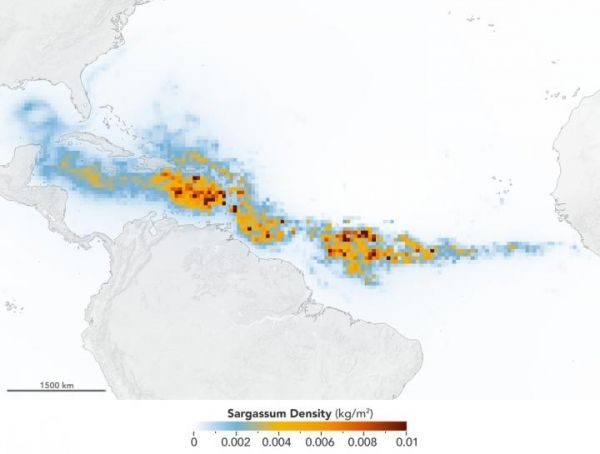An unprecedented belt of brown algae stretches from West Africa to the Gulf of Mexico—and it’s likely here to stay. Scientists at the University of South Florida in St. Petersburg's College of Marine Science used NASA satellite observations to discover and document the largest bloom of macroalgae in the world, dubbed the Great Atlantic Sargassum Belt, as reported in Science.
Based on computer simulations, they confirmed that this belt of the brown macroalgae Sargassum forms its shape in response to ocean currents. It can grow so large that it blankets the surface of the tropical Atlantic Ocean from the west coast of Africa to the Gulf of Mexico. In 2018, more than 20 million tons of it – heavier than 200 fully loaded aircraft carriers – floated in surface waters and became a problem to shorelines lining the tropical Atlantic, Caribbean Sea, Gulf of Mexico, and east coast of Florida, as it carpeted popular beach destinations and crowded coastal waters.
“The scale of these blooms is truly enormous, making global satellite imagery a good tool for detecting and tracking their dynamics through time,” said Woody Turner, manager of the Ecological Forecasting Program at NASA Headquarters in Washington.
Read more at: NASA/GODDARD SPACE FLIGHT CENTER
Scientists used NASA's Moderate Resolution Imaging Spectroradiometer (MODIS) on Terra and Aqua satellites to discover the Great Atlantic Sargassum Belt (GASB), which started in 2011. It has occurred every year since, except 2013, and often stretches from the west coast of Africa to the Gulf of Mexico. (Photo Credit: NASA/Earth Observatory. Data provided by Mengqiu Wang and Chuanmin Hu, USF College of Marine Science)


